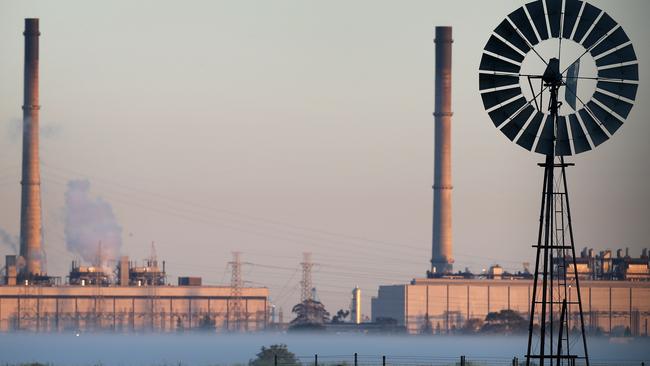AGL to unveil plans for gas-fired new Torrens Island power station
UPDATED: ENERGY giant AGL will on Wednesday unveil plans to build a 210MW gas-fired power station at Torrens Island to eventually replace its existing 50-year-old plant.
SA News
Don't miss out on the headlines from SA News. Followed categories will be added to My News.
- Turn your solar panels into cold hard cash
- Torrens Island Power Station reaching ‘end of life’
- SA electricity crisis: Government unveils $550 million power plan
- Power dossier: All you need to know about SA energy generation
ENERGY giant AGL will on Wednesday unveil plans to build a 210MW gas-fired power station at Torrens Island to eventually replace its existing 50-year-old plant.
The Advertiser understands the new plant will be operational by 2019 and will replace the four units at the 480MW Torrens Island A station, which will be shut down.
AGL on Tuesday invited media to an announcement at 10am today but The Advertiser independently confirmed details of the new plant and exclusively revealed them on Advertiser.com.au.
AGL says the new power station will be a multimillion-dollar investment and create 200 construction jobs.
AGL chief executive officer Andy Vesey, Premier Jay Weatherill and Energy Minister Tom Koutsantonis, will be at this morning’s announcement. They all declined to comment.
It is not clear why the new plant will have 270MW less capacity than the existing Torrens Island plant.
Federal Energy Minister Josh Frydenberg, who Mr Weatherill verbally attacked at an AGL renewable energy project launch in Adelaide in March, is not listed as a dignitary at today’s event.
AGL’s major investment decision comes before the much-anticipated review of the National Electricity Market, by Australia’s chief scientist Dr Alan Finkel, is presented to the Council of Australian Governments meeting in Hobart on Friday.
Mr Weatherill in March revealed the State Government would build a $360 million, 250MW gas-fired plant. In April, he said 31 expressions of interest had been lodged to build the plant.
The government has insisted this will not be a market competitor and will provide standby power in times of emergency but run all the time to stabilise the grid.
It is likely AGL’s new 210MW plant is part of a proposal that Mr Vesey said in April had been put on ice in the wake of the government plan.
At the time, he said AGL had been assessing whether to build a 200-400MW plant in SA, using fast-start gas turbines, as well as a battery storage facility of about 100MW, expansion of wind and solar power and a second storage plant at a solar farm.
The A station, which became operational in 1967, comprises four generating units, while the 800MW B station, which was completed in 1976, also consists of four units.
In March, AGL likened the Torrens Island plant to an elderly person sitting in a retirement home, raising fear it’s not long until the vital asset “craps out”.
The following week, the State Government announced taxpayers would fund the construction of a new emergency gas-fired power station and support the construction of the nation’s largest battery in a $550 million plan to fix the energy crisis.
AGL wholesale markets general manager Richard Wrightson at the time said the company was struggling to find sufficient gas for the Torrens Island plant.
“(It) is a very old station and its reliability is poor because it’s very much getting to the end of life,” he told a Senate committee in March.
Rival energy firm ENGIE in Australia, also in March, announced Pelican Point power station — just across the Port River from Torrens Island — would return to its full available capacity of 479MW from July 1.
ENGIE secured gas supply and signed electricity offtake agreements with customers including Origin Energy.
Pelican Point’s 240MW second unit had been mothballed in April, 2015 — a decision attributed to an inability to compete on price with cheaper renewable energy.
A final decision is expected soon on the State Government’s project to build Australia’s biggest battery, also part of the $550 million energy plan unveiled in March.
Five bidders were short-listed and received requests for proposal documents for the battery, to be financed by a newly created $150 million Renewable Technology Fund.



